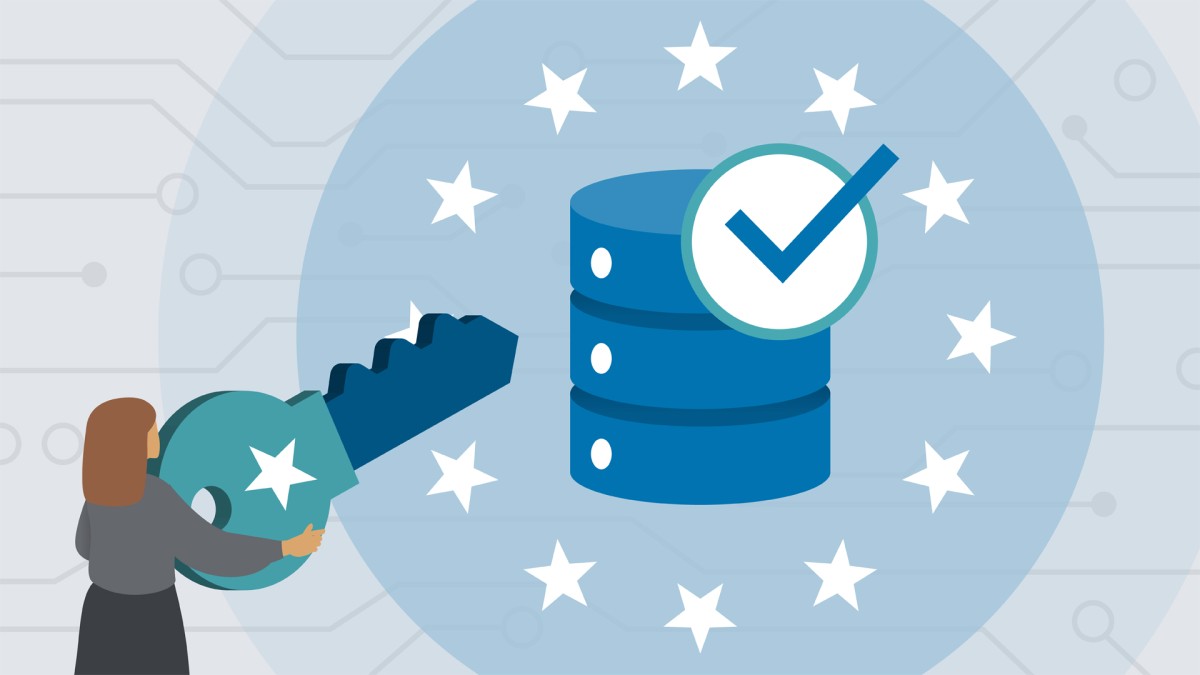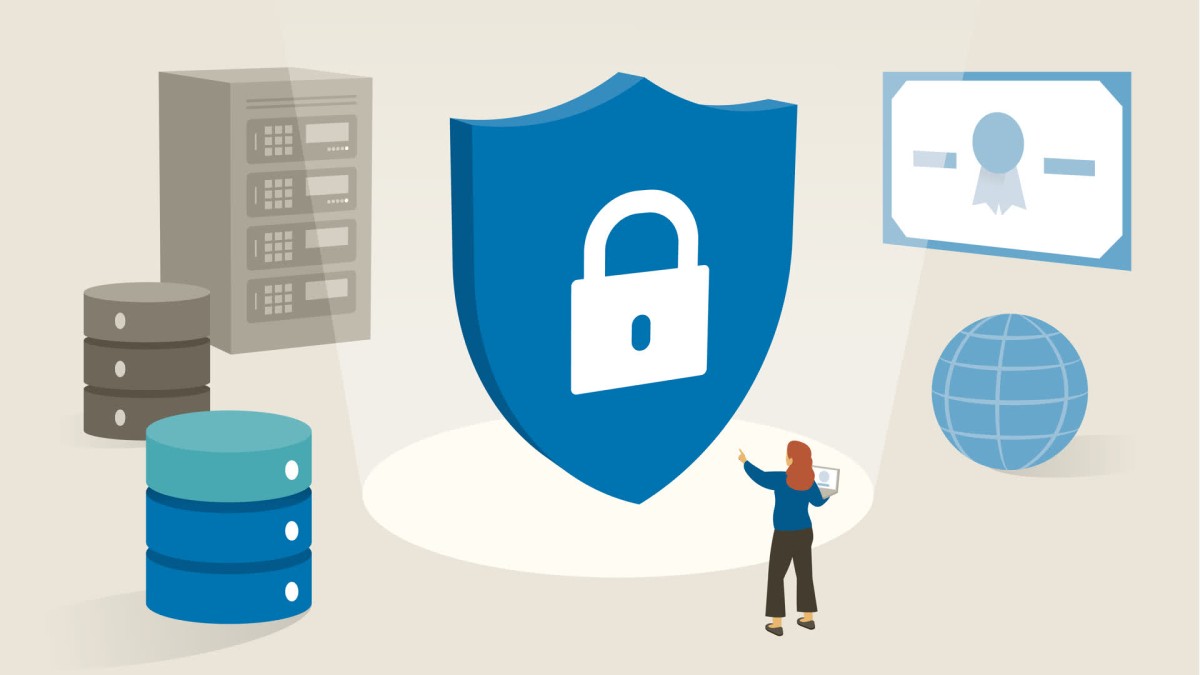Introduction
CompTIA SecurityX (CAS-005): Introduction
()
1. Implementing Appropriate Governance Components
Module 1: Governance, risk, and compliance introduction
()
Security program documentation
()
Security program management
()
Governance frameworks
()
Change and configuration management
()
Governance, risk, and compliance (GRC) tools
()
Data governance in staging environments
()
2. Risk Management Activities
Learning objectives
()
Impact analysis
()
Risk assessment and management
()
Third-party risk management
()
Availability risk considerations
()
Confidentiality risk considerations
()
Integrity risk considerations
()
Privacy risk considerations
()
Crisis management and breach response
()
3. Compliance Security Strategies
Awareness of industry-specific compliance
()
Industry standards
()
Security and reporting frameworks
()
Audits vs. assessments vs. certifications
()
Privacy regulations
()
Cross-jurisdictional compliance requirements
()
4. Threat Modeling Activities
Learning objectives
()
Threat actor characteristics
()
Attack patterns
()
Threat modeling frameworks
()
Attack surface determination
()
Threat modeling methods
()
Modeling applicability to the environment
()
5. Security Challenges with AI
Legal and privacy implications
()
Threats to the models
()
AI-enabled attacks
()
Risks of AI usage
()
AI assistants and digital workers
()
6. Designing Resilient Systems
Module 2: Security architecture introduction
()
Learning objectives
()
Next-generation firewalls
()
Intrusion detection/prevention systems
()
VPNs and SDPs
()
Network access control (NAC)
()
Web application firewalls (WAF)
()
Content delivery networks (CDN)
()
Scanners, proxies, taps, and collectors
()
Availability and integrity design considerations
()
7. Securing the DevOps Lifecycle
Security requirements definition
()
Software assurance
()
Continuous integration/continuous deployment (CI/CD)
()
Supply chain risk management
()
Hardware assurance
()
End-of-life (EOL) considerations
()
8. Secure Architecture Control Design
Attack surface management and reduction
()
Detection and threat hunting
()
Information and data security design
()
Data loss prevention (DLP)
()
Securing hybrid infrastructures
()
Securing third-party integrations
()
Assessing control effectiveness
()
9. Designing Access, Authentication, and Authorization
Learning objectives
()
Provisioning, proofing, and deprovisioning
()
Access control systems
()
Federation and SSO
()
Zero trust PDPs and PEPs
()
Access control models
()
Public key infrastructure (PKI)
()
Logging and auditing access control
()
10. Secure Cloud Implementation
Learning objectives
()
Cloud service types and shared responsibility
()
Cloud control strategies
()
Serverless cloud solutions
()
Infrastructure as code (IaC)
()
Container security
()
API security
()
Cloud access security brokers (CASB)
()
Key management services
()
Cloud connectivity, integration, and adoption
()
11. Zero Trust Concepts
Learning objectives
()
Zero trust principles
()
Defining subject-object relationships
()
Continuous authorization and context-based reauthentication
()
Zero trust network architecture
()
API integration and validation
()
Asset identification, management, and attestation
()
Security boundaries and deperimeterization
()
12. Engineering and Troubleshooting IAM
Module 3: Security engineering introduction
()
Subject access control
()
Authentication and authorization
()
Biometric factors
()
Secrets management
()
Conditional access
()
Privileged identity management and attestation
()
Cloud IAM access and trust policies
()
Logging and monitoring IAM
()
13. Enhancing Endpoint to Server Security
Learning objectives
()
Host-based IDS and IPS
()
Endpoint detection and response (EDR)
()
Next-generation EDR
()
Attack surface monitoring and reduction
()
Antimalware
()
Host-based firewall and browser isolation
()
SELinux
()
Configuration management and application control
()
Enterprise mobility management (MDM and MAM)
()
Threat actor tactics, techniques, and procedures (TTPs)
()
14. Complex Network Infrastructure Security Issues
Learning objectives
()
Network misconfigurations
()
IDS and IPS issues
()
Domain name system (DNS) security
()
Email security
()
TLS and PKI issues
()
Denial of service issues
()
Network access control list (ACL) issues
()
15. Hardware Security Technologies and Techniques
Threat actor TTPs
()
Roots of trust
()
Security coprocessors
()
Virtual and self-healing hardware
()
Secure and measured boot
()
Host-based encryption and self-encrypting drive (SED)
()
Tamper detection and countermeasures
()
16. Securing Specialized and Legacy Systems
Learning objectives
()
Characteristics of specialized and legacy systems
()
Operational technology (OT)
()
Internet of things (IoT)
()
Embedded systems and system-on-chip (SoC)
()
Wireless technologies and radio frequency (RF)
()
Security and privacy considerations
()
Industry-specific challenges
()
17. Securing the Enterprise with Automation
Learning objectives
()
Scripting and event-based triggers
()
Infrastructure as code (IaC)
()
Configuration files
()
Cloud APIs andsoftware development kits (SDKs)
()
Generative AI
()
Containerization
()
Automated patching and auto-containment
()
Security orchestration, automation, and response (SOAR)
()
Security content automation protocol (SCAP)
()
18. Advanced Cryptographic Concepts
Learning objectives
()
Post-quantum cryptography (PQC)
()
Key stretching and splitting
()
Homomorphic and envelope encryption
()
Forward secrecy
()
Authenticated encryption with associated data (AEAD)
()
Hardware acceleration
()
Mutual authentication and secure multiparty computation
()
19. Appropriate Cryptographic Use Cases and Techniques
Learning objectives
()
Data in transit, rest, and use
()
Data sanitization and anonymization
()
Secure email with cryptography
()
Non-repudiation
()
Immutable databases and blockchain
()
Legal, regulatory, and privacy considerations
()
Passwordless authentication
()
Software provenance and code integrity
()
Survey of cryptographic techniques
()
20. Monitoring and Response Activities
Module 4: Security operations introduction
()
Learning objectives
()
Security information event management (SIEM)
()
Aggregate data analysis
()
Behavior baselines and analytics
()
Incorporating diverse data sources
()
Security alerting for data
()
Reporting and metrics
()
21. Analyzing Vulnerabilities and Attacks
Learning objectives
()
Injection attacks
()
Request forgery
()
Unsafe memory utilization
()
Race conditions
()
Insecure configurations and improper patching
()
Deserialization and confused deputy vulnerabilities
()
Weak ciphers
()
22. Mitigating Vulnerabilities and Attacks
Learning objectives
()
Input validation, output encoding, and indexing
()
Safe functions
()
Updating and patching
()
Security design patterns
()
Least privilege, defense in depth, and segregation of duties
()
Fail secure and fail safe
()
Secrets management
()
Encryption and code signing
()
23. Threat Hunting and Threat Intelligence
Learning objectives
()
Internal intelligence sources
()
External intelligence sources
()
Counterintelligence and operational security
()
Threat intelligence platforms (TIPs)
()
Indicator of compromise (IoC) sharing
()
Indicators of attack
()
Rule-based languages
()
24. Incident Response Activities
Learning objectives
()
Malware analysis
()
Hardware analysis
()
Reverse engineering
()
Data recovery and extraction
()
Root cause analysis and threat response
()
Preparedness exercises
()
Cloud workload protection program (CWPP)
()
Conclusion
CompTIA SecurityX (CAS-005): Summary
()


